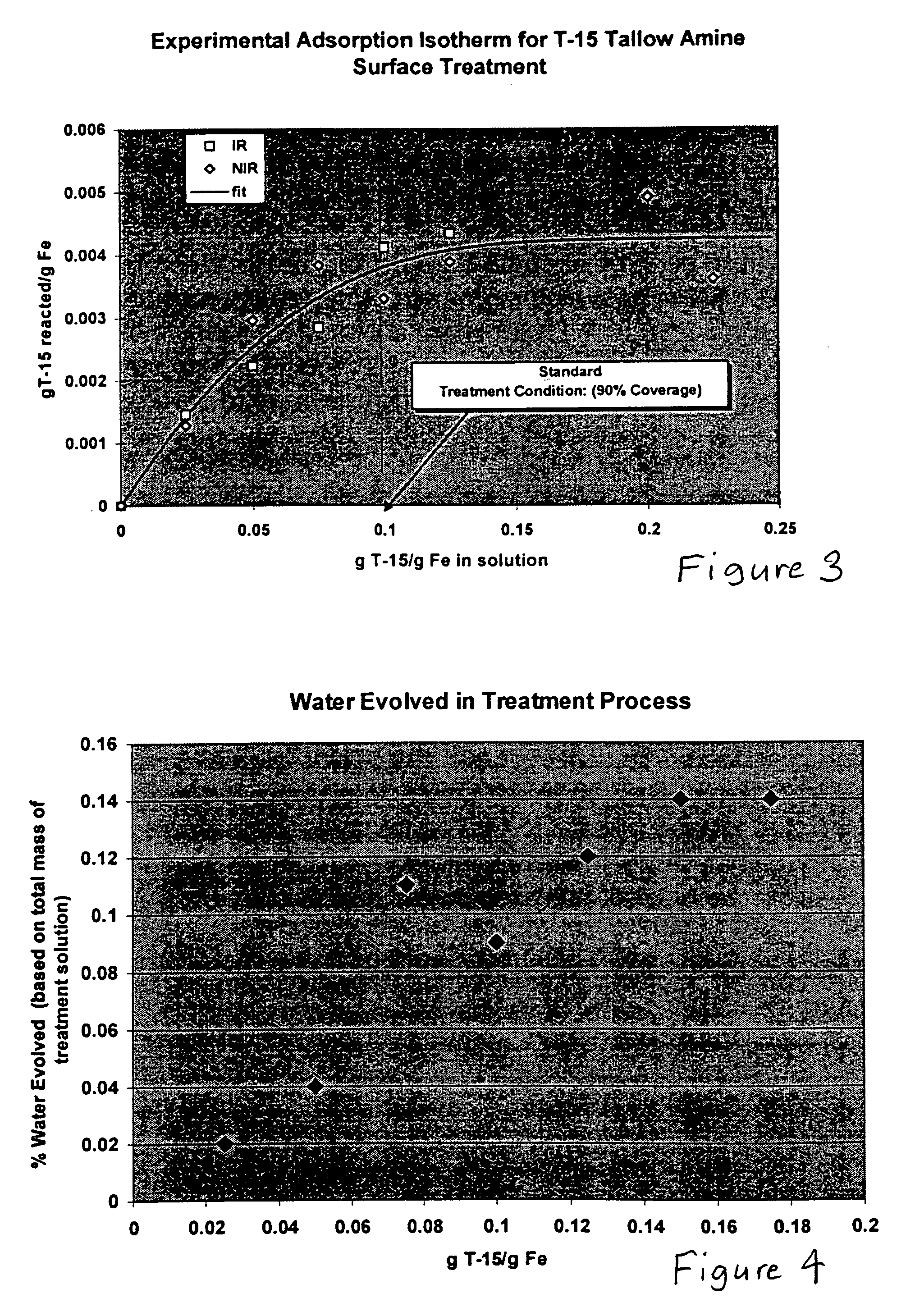Hydrophobic metal particles for magnetorheological compositions
a metal particle and hydrophobic technology, applied in the field of hydrophobic metal particles, can solve the problems of inability to maintain metal powders in inert atmospheres, oxidation tends to affect a large surface area, and is usually impossible to remove, so as to reduce the need for special handling, and reduce the effect of oxidation
- Summary
- Abstract
- Description
- Claims
- Application Information
AI Technical Summary
Benefits of technology
Problems solved by technology
Method used
Image
Examples
Embodiment Construction
In the present invention, surfactants selected from ethoxylated amines and fatty acids are preferred with ethoxylated amines being most preferred. Ethoxylated amines having the following chemical structure are preferred:
where R is an alkyl group, and the sum of x+y range from 2 to 50. An example of a suitable commercially available ethoxylated amine is Ethomeen T-15 available from Akzo Nobel. For Ethomeen T-15, x+y=5, and R is a mixture of alkyl groups, approximately half of which contain some unsaturation. The alkyl groups can be saturated, derived from, for example, octadecanoic acid (e.g., Ethomeen 18 / 15, from Akzo Nobel). Propoxylated amines, such as N-tallowalkyl-1,1′-iminobis-2-propanol (e.g., Propomeen T / 12, from Akzo Nobel) and ethoxylated diamines, such as ethoxylated (3) N-tallow-1,3-daiminopropane (e.g., Ethoduomeen T / 13, from Akzo Nobel) are also suitable and are available commercially. Fatty acid surfactants that may be used include, for example, oleic acid, linolei...
PUM
| Property | Measurement | Unit |
|---|---|---|
| Fraction | aaaaa | aaaaa |
| Hydrophobicity | aaaaa | aaaaa |
| Chemical structure | aaaaa | aaaaa |
Abstract
Description
Claims
Application Information
 Login to View More
Login to View More - R&D
- Intellectual Property
- Life Sciences
- Materials
- Tech Scout
- Unparalleled Data Quality
- Higher Quality Content
- 60% Fewer Hallucinations
Browse by: Latest US Patents, China's latest patents, Technical Efficacy Thesaurus, Application Domain, Technology Topic, Popular Technical Reports.
© 2025 PatSnap. All rights reserved.Legal|Privacy policy|Modern Slavery Act Transparency Statement|Sitemap|About US| Contact US: help@patsnap.com



